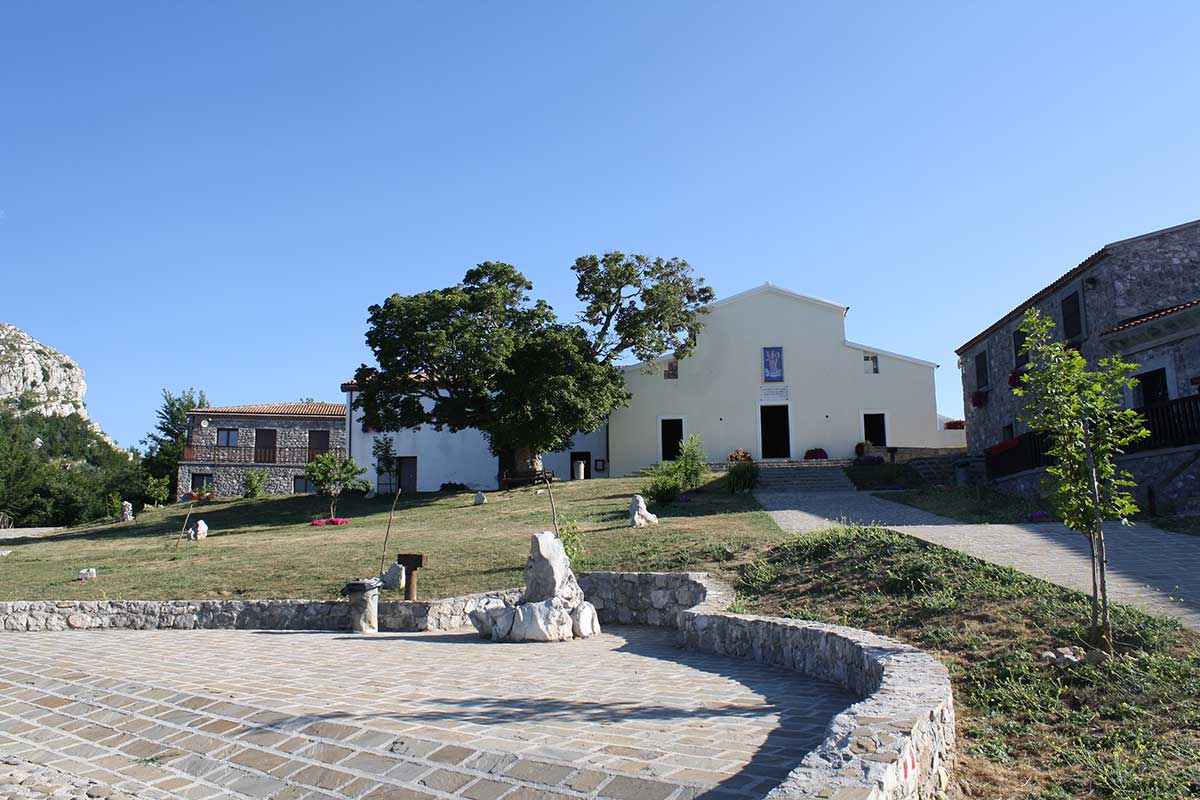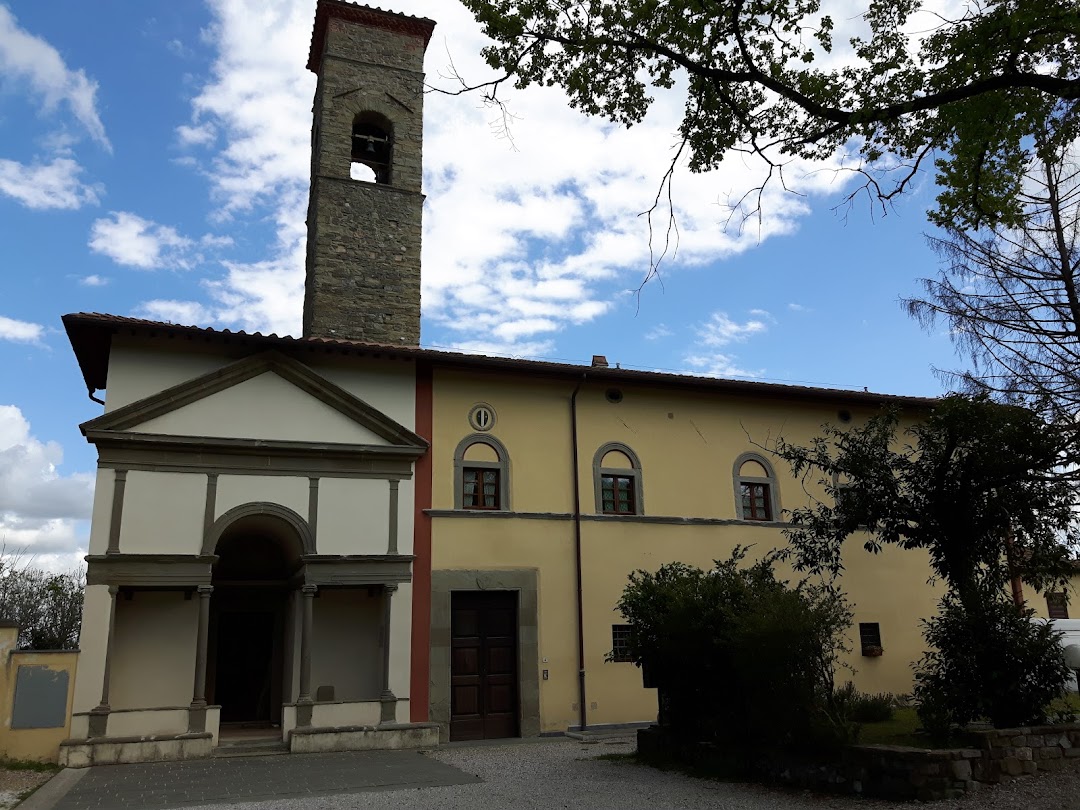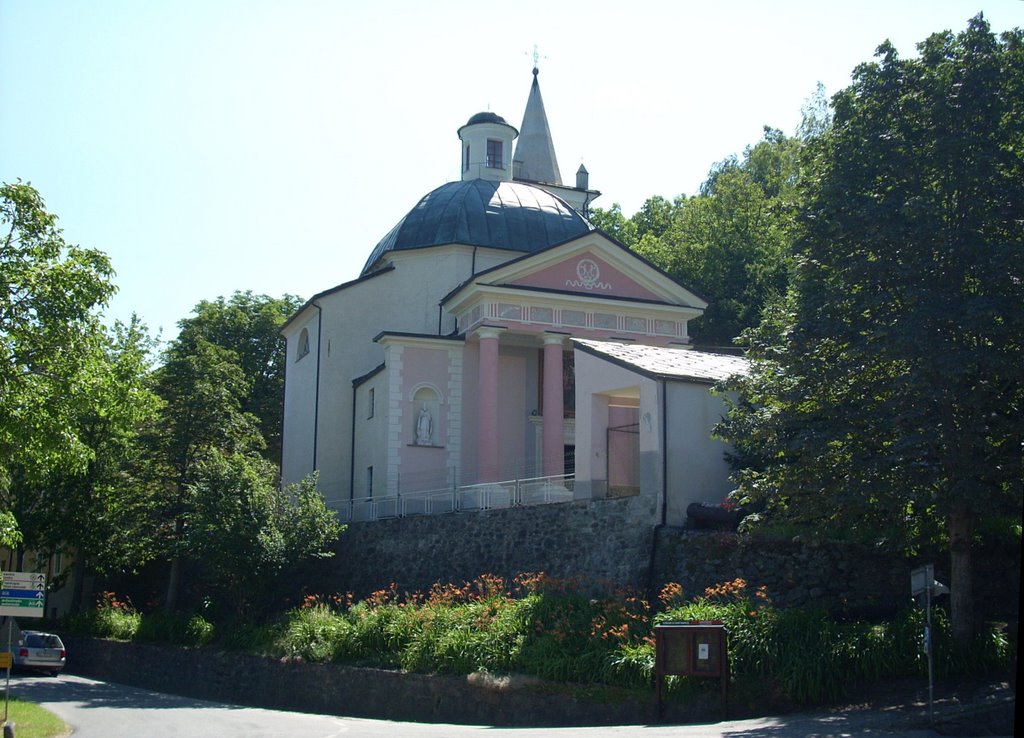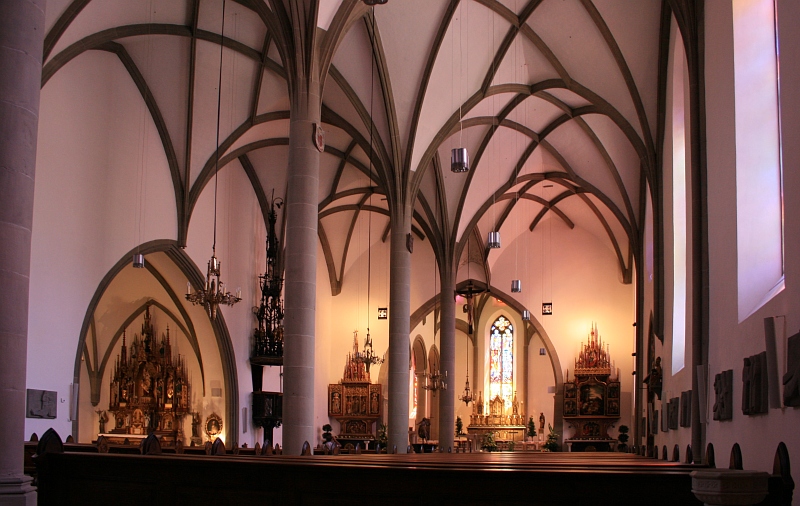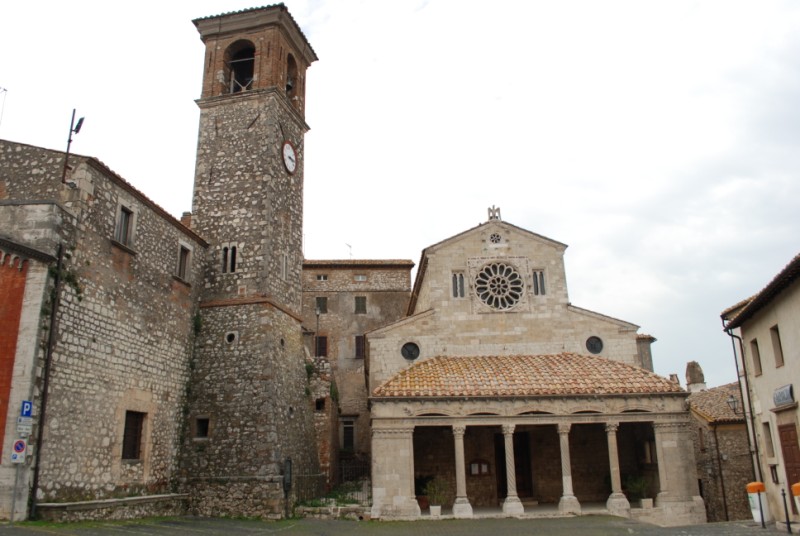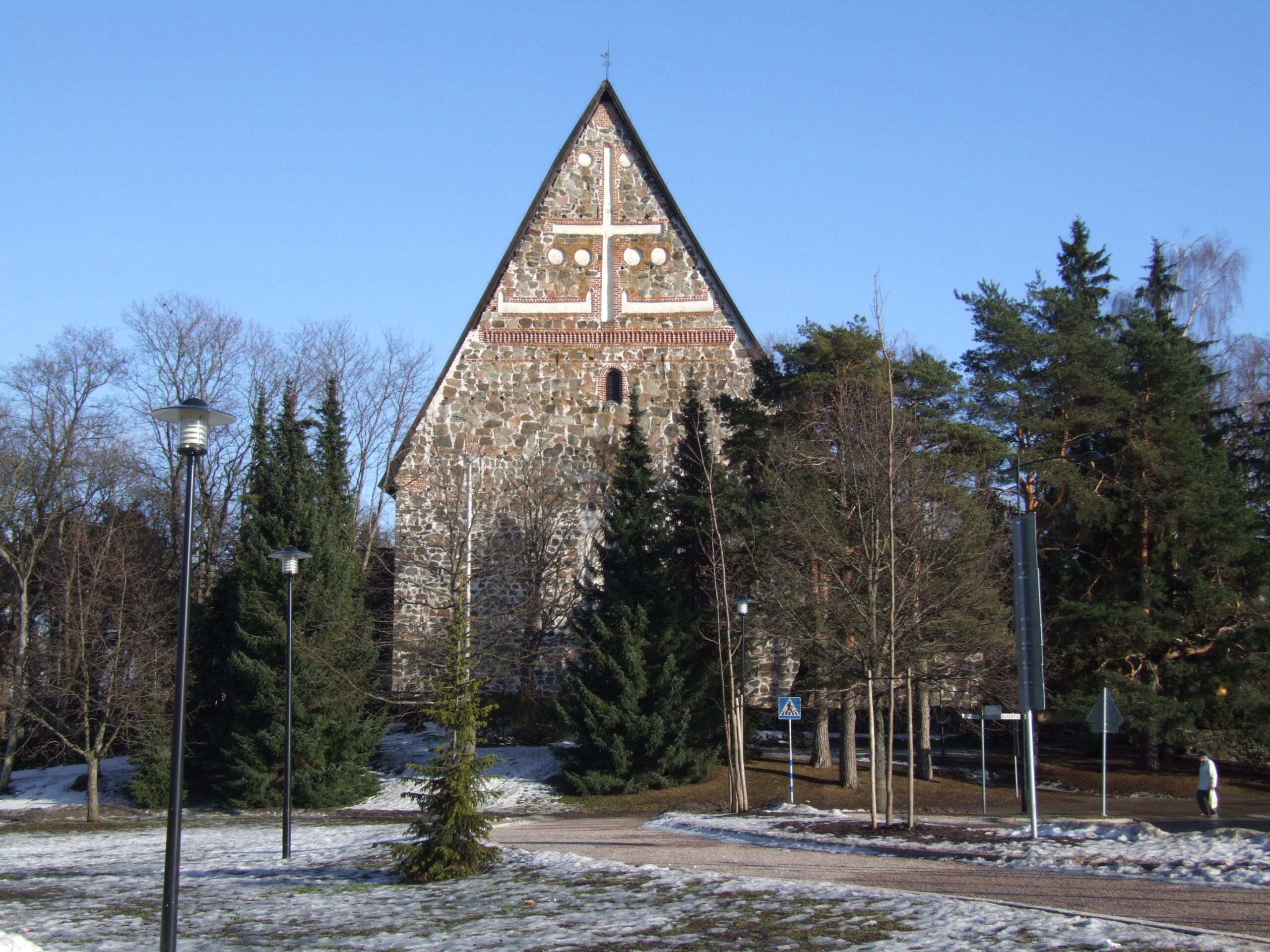St. Mary of the Cross Church (since 1529), formerly St. Lawrence the Martyr.
It was built on pre-existing foundations dating from the Swabian-Byzantine period, and the lower part of the bell tower was originally a watchtower also from the Swabian-Byzantine period.
The lower part of the terminal structure with the four single-lancet windows facing Via F.lli Bandiera and Via Venita, is part of the 13th-century structure structured with a central square plan system with two entrances to the east and west still present in 1701,but traces of which have been lost today.
We owe to Msgr. Giustiniani, on the occasion of the apostolic visit of 1595, some indications regarding the enlargement interventions made necessary because of the considerable growth of the population of Ferrandino, which will lead in 1633 to the addition of the central nave only and of the portal made by the builders from Cavia; and finally, in the report of Msgr. Positani of 1726 the 3 naves are mentioned for the first time, thanks to which the church reaches its present size. In 1857, following the earthquake, the 3 naves were demolished, except for the outer walls, and rebuilt later. In 1872 the archpriest Lisanti reported that he had
had the cross and dome rebuilt " with other solidity and architectural strength."
Among the works in the mother church are:
–
Madonna and Child of 1530 attributed to an unknown Neapolitan sculptor;
–
reliquary (stauroteca) of the Holy Wood of the Cross of Neapolitan manufacture
of the 17th cent;
–
High altar made by Pasquale Sebastiano in 1777;
–
Double-headed Eagle in carved and gilded wood by an unknown 17th-century sculptor.
(dimensions 233x284cm);
–
Statues of Isabella and Frederick of Aragon (dimensions 103x42cm) executed by.
Antonio Persio of Montescaglioso (1507-1593) in carved and gilded wood.


